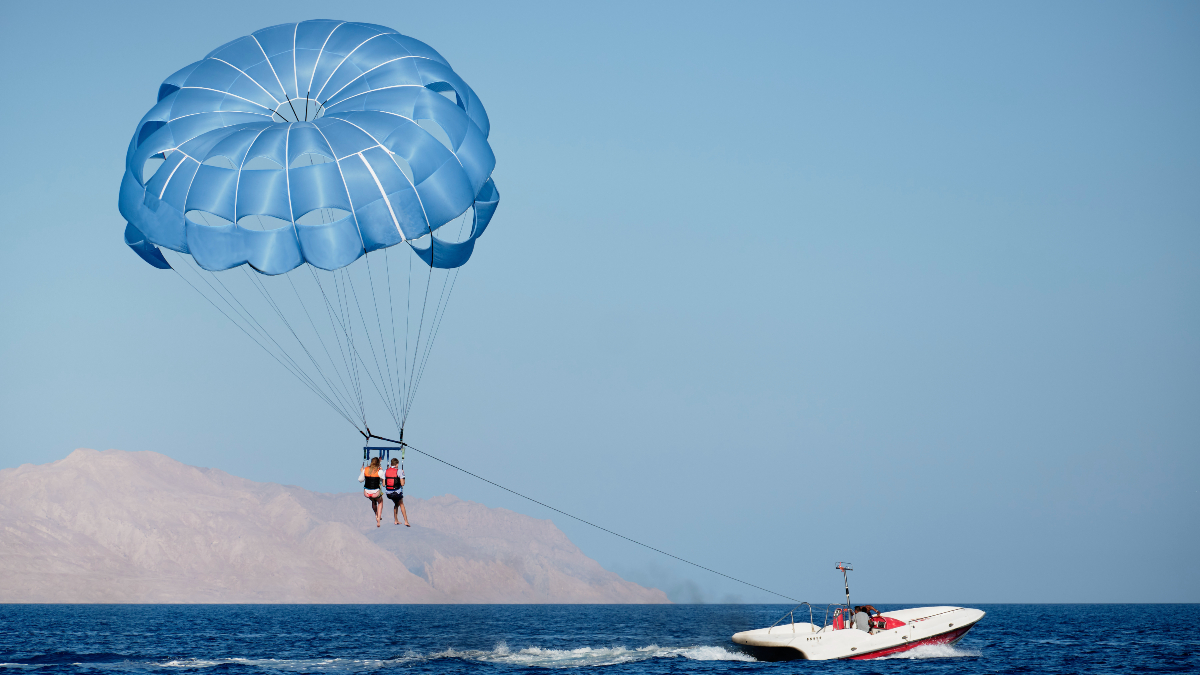For those of you who might not know what parasailing is – if I’m able to simplify it in one word – it would be “fun”. I’ve had the grand opportunity to try the thrilling watersport a few days ago when vacationing at a nearby island. I’ve only had good words to take back home with me. That, plus a ton of pictures for the ‘gram, of course.
So, what exactly is parasailing?
Expect the unexpected. No, that doesn’t mean you should fear for your life. Quite the contrary, you may open your eyes up to a new reality.
Parasailing gets you high up in the air, and it’s usually done on beaches by the sea or on boats in the vast ocean as your backdrop. When parasailing, you can even reach a high of over 1200 feet, giving you blockbuster cinematic views that money simply can’t buy.
Did you know that parasailing isn’t a watersport?
Yep, as it doesn’t require years of training and practice, parasailing is a perfect leisure activity for those who enjoy the views without taxing the body too much. Parasailing is also a popular activity choice for the disabled.
So, how should I prepare for parasailing?
1. Know your weather
Parasailing is a huge weather-dependent activity, so choosing the right weather, including the timing of the activity makes a huge difference! Listen to what the guide and instructors have to say – if the weather is hot, sunny, and no visible clouds or potential storms heading your way, you should be set to go.
2. Know what to wear
Wearing appropriate activity clothing is important – I wore a slightly loose-fitted shirt and tight shorts (as you can see, I was not prepared for the adventure, haha!).
What I would recommend instead: Done your tight-fitted swimwear so that the harness fits you like a glove.
P.S. The harness will be a tad bit loose, so don’t worry! Your instructors will take good care to strap you in tightly. You’ll also be using a lifejacket over your swimwear, so wearing fitted clothes underneath will come in handy!
3. Know the limits
As with any other activity, parasailing takes into account your age and weight limits. For minor riders, most companies will ensure an adult accompanies, which is what the “tandem” category is for (2 people at a time).
The weight can also influence the instructor’s decision to let you up in the air – it’s best to keep the general rules and limits in mind to ensure a safe thrill ride!
4. Take some time to get to know the crew better
This is something I cannot stress enough – keeping an open communication between yourself and the crew or instructors is very important to establish a safe and enjoyable ride. When up in the air, you may not be able to hear the crew in the boat below give you instructions (wherever necessary). In cases such as this, learn to take intervals looking at the crew below to assess the situation.
That has greatly helped me learn when to hold the ropes tighter, and when to get ready to descend.
All in all, it is an amazing ride above, offering you the best bird’s eye view of the surrounding beauty that envelops us. It is truly a “once-in-a-lifetime” experience for everyone to enjoy!


